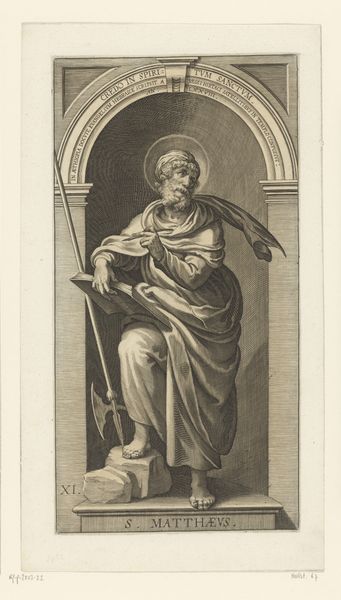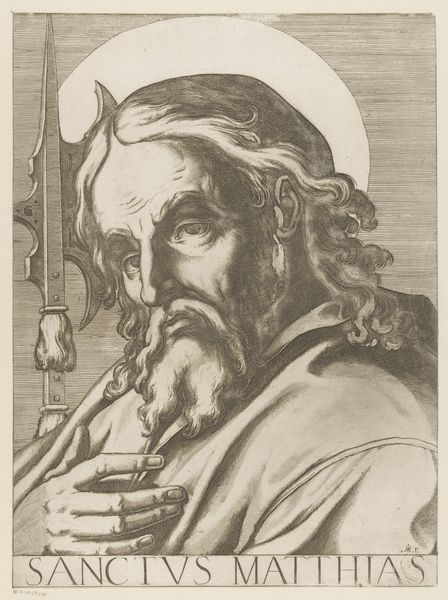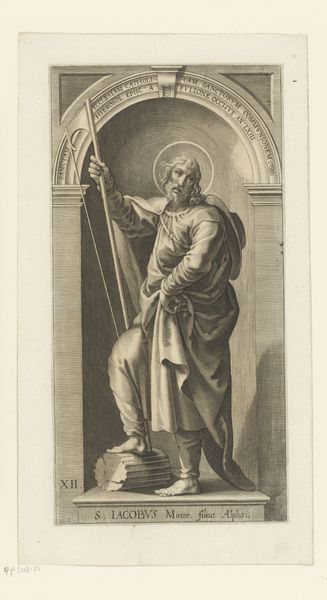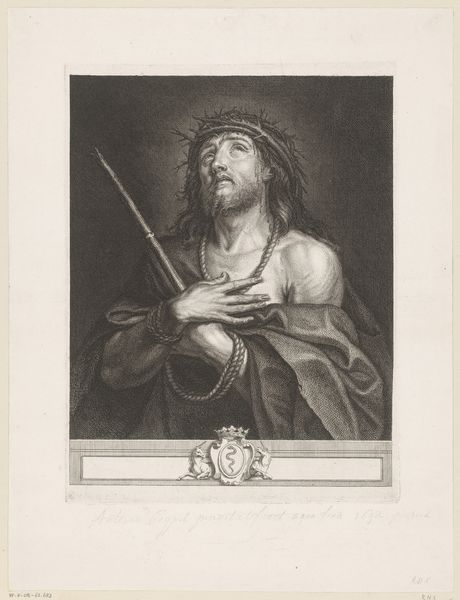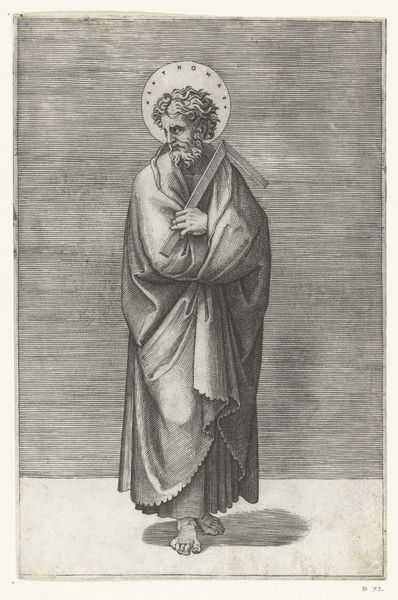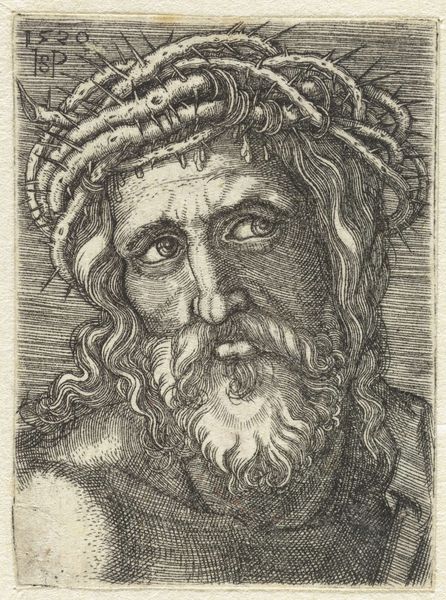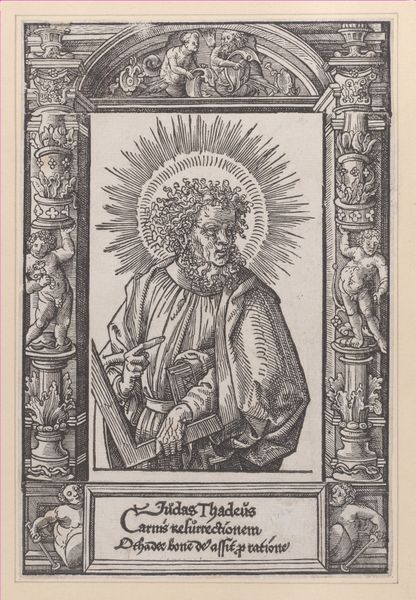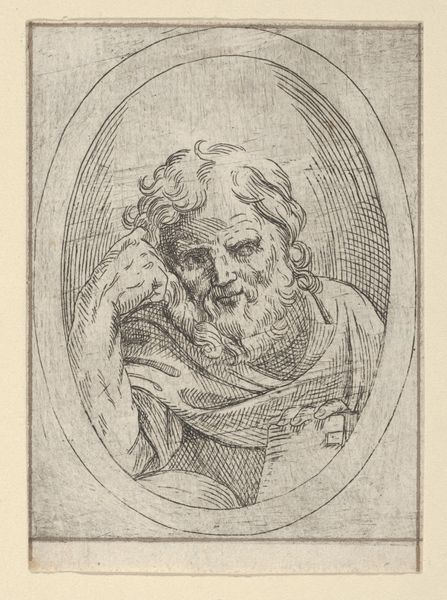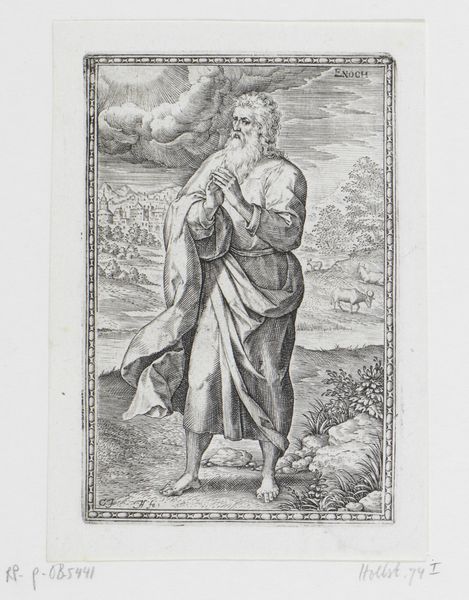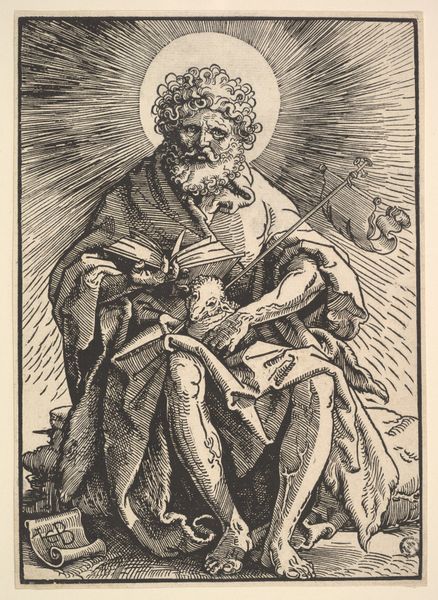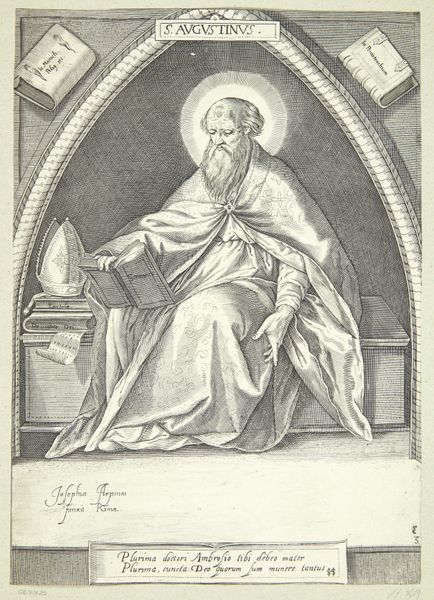
print, engraving
#
portrait
# print
#
old engraving style
#
caricature
#
mannerism
#
portrait drawing
#
history-painting
#
engraving
Dimensions: height 260 mm, width 197 mm, height 288 mm, width 221 mm
Copyright: Rijks Museum: Open Domain
This is Cornelis Cort’s engraving, “Ecce Homo,” created in the late 16th century, presenting Christ crowned with thorns. The crown, a twisted wreath of sharp spikes, pierces the flesh, symbolizing not only suffering but also a subversion of earthly power. Consider this motif of the crown, an emblem typically associated with royalty, now fashioned from instruments of pain. We see echoes of this inversion in earlier depictions of sacrificial victims adorned with flowers, unknowingly paraded towards their doom. The emotional power of the image resides in this juxtaposition – the divine subjected to human cruelty. The figure’s downcast eyes and bound hands evoke a deep sense of empathy and introspection. "Ecce Homo," "Behold the Man," a call to witness and perhaps recognize ourselves in this drama of suffering and redemption. The crown of thorns does not simply disappear after the crucifixion; it resurfaces, evolving through art and culture. It speaks to our collective memory of suffering, sacrifice, and the cyclical nature of human experience.
Comments
No comments
Be the first to comment and join the conversation on the ultimate creative platform.

